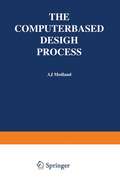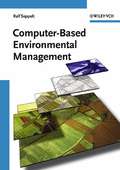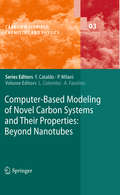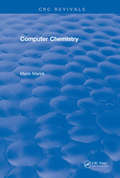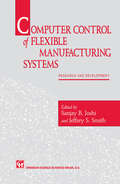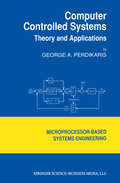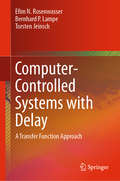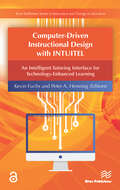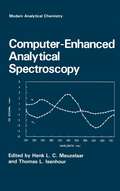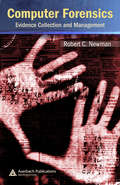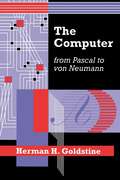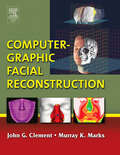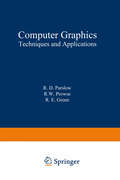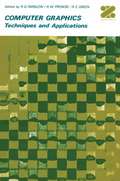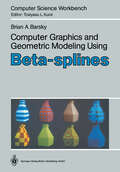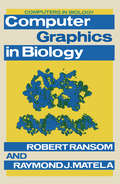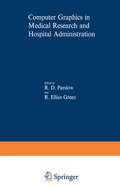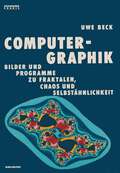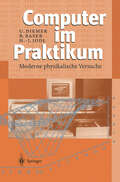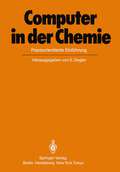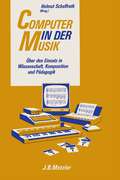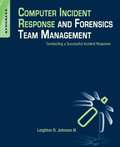- Table View
- List View
The Computer-Based Design Process
by A. J. MedlandThe topic known as computer-aided design and manufacture has developed rapidly over the last 20 years. The range of hardware configurations and supporting software on offer to the potential user is bewildering. This extends from the inexpensive single-user micro-based system, through to the vast industrial networks which are supported by many remote mainframe machines and have been reported to service up to a thousand workstations. This advance in technology has been driven by, and in its turn has fuelled, the development of ever greater computing power and graphics capability. It is these features that all working in the field would now recognize as essential to any CADCAM system. Effort has thus been put into developing a range of structural and solid modellers which, in conjunction with the appropriate terminal configuration and ray tracing graphics technology, can construct pictures of uncanny realism. Complicated analysis programs have been developed that can calculate the stresses in complex structures and display the results as colour shaded maps upon the surface of a pictorial view of the object. If the time to process and the system cost are ignored, then the apparent ease with which these systems perform such analysis and generate such high quality images, leaves the observer awe struck.
Computer-Based Environmental Management
by Ralf SeppeltHere, the author provides professionals in environmental research and management with the information they need with respect to computer modeling: An understanding of the mathematical fundamentals and the choice of the optimal approach and corresponding software for their particular task. - Numerous illustrations, flowcharts and graphs, partly in color, as well as worked examples help in comprehending complex mathematical tasks and their solutions without the use of confusing mathematical formalism; - Case studies from various fields of environmental research, such as landscape ecology, environmental assessment, population ecology, hydrology, and agroecology, facilitate the application of simulation models to the solution of real-world problems; - Contains a detailed summary of currently available software tools and the application in spatially explicit simulation based on geographic information systems. The worked examples and case studies cover a broad range of environmental systems and processes, adopting such modern mathematical methodology as partial differential equations, fuzzy logic, hybrid Petri nets, and optimum control theory. The result is a unique presentation of applications for high standard modeling and simulation methodologies in the interdisciplinary fields of environmental research. From the Foreword by Robert Costanza (Gund Institute of Ecological Economics, Burlington, VT, USA): "As a teacher of environmental modeling, I've been searching for many years for the perfect text to use courses. My search has ended with the publication of Ralf Seppelt's book and I intend to use it as a core text in modeling courses."
Computer-Based Modeling of Novel Carbon Systems and Their Properties: Beyond Nanotubes (Carbon Materials: Chemistry and Physics #3)
by Luciano Colombo Annalisa FasolinoDuring the last twenty years, the multiplicity of potential carbon structures has consistently posed a formidable challenge to theoretical and computational physicists. Several different methods are currently being used to study the structure and the properties of such systems. These methods include simulations based on empirical potentials, tight-binding calculations and density functional theory (DFT). A combination of these methods is needed to make significant progress in the carbon field.This volume provides the reader with a survey of state-of-the-art theoretical and computational contributions featuring novel carbon systems (excluding nanotubes). The chapters are authored by leading researchers who are all actively involved with different aspects of carbon structure and property elucidation. Consequently, a variety of methods are presented to the reader. The editors have successfully compiled an informative book that:• Showcases the latest results in carbon materials • Demonstrates how different theoretical methods are combined • Explains how new carbon structures are predicted Computer-Based Modeling of Novel Carbon Systems and Their Properties is aimed at advanced undergraduates, graduates, and researchers with an interest in computational nanomaterials.
Computer Chemistry (CRC Press Revivals)
by Mario MarsiliComputer Chemistry illustrates the methods and philosophies of how a computer can be instructed to "understand" chemical facts, formulas and rules. It focuses on discussions of all of the major sections in both theoretical framework and practical application through examples. It includes the Synthesis Design Systems for the simulation of chemical reactions, the Structure Elucidation Systems for the interpretation of spectral data, the Molecular Modelling Systems for the visualization of chemical structures and the calculation of physico-chemical parameters.
Computer Chemistry (CRC Press Revivals)
by Mario MarsiliComputer Chemistry illustrates the methods and philosophies of how a computer can be instructed to "understand" chemical facts, formulas and rules. It focuses on discussions of all of the major sections in both theoretical framework and practical application through examples. It includes the Synthesis Design Systems for the simulation of chemical reactions, the Structure Elucidation Systems for the interpretation of spectral data, the Molecular Modelling Systems for the visualization of chemical structures and the calculation of physico-chemical parameters.
Computer control of flexible manufacturing systems: Research and development
by S. Joshi J. S. SmithWith the approach of the 21st century, and the current trends in manufacturing, the role of computer-controlled flexible manufacturing an integral part in the success of manufacturing enterprises. will take Manufacturing environments are changing to small batch (with batch sizes diminishing to a quantity of one), larger product variety, produc tion on demand with low lead times, with the ability to be 'agile.' This is in stark contrast to conventional manufacturing which has relied on economies of scale, and where change is viewed as a disruption and is therefore detrimental to production. Computer integrated manufac turing (CIM) and flexible manufacturing practices are a key component in the transition from conventional manufacturing to the 'new' manu facturing environment. While the use of computers in manufacturing, from controlling indi vidual machines (NC, Robots, AGVs etc.) to controlling flexible manu facturing systems (FMS) has advanced the flexibility of manufacturing environments, it is still far from reaching its full potential in the environment of the future. Great strides have been made in individual technologies and control of FMS has been the subject of considerable research, but computerized shop floor control is not nearly as flexible or integrated as hyped in industrial and academic literature. In fact, the integrated systems have lagged far behind what could be achieved with existing technology.
Computer Controlled Systems: Theory and Applications (Intelligent Systems, Control and Automation: Science and Engineering #8)
by G. PerdikarisThe primary objective of the book is to provide advanced undergraduate or frrst-year graduate engineering students with a self-contained presentation of the principles fundamental to the analysis, design and implementation of computer controlled systems. The material is also suitable for self-study by practicing engineers and is intended to follow a first course in either linear systems analysis or control systerns. A secondary objective of the book is to provide engineering and/or computer science audiences with the material for a junior/senior-level course in modern systems analysis. Chapters 2, 3, 4, and 5 have been designed with this purposein rnind. The emphasis in such a course is to develop the rnathernatical tools and methods suitable for the analysis and design of real-time systems such as digital filters. Thus, engineers and/or computer scientists who know how to program computers can understand the mathematics relevant to the issue of what it is they are programrning. This is especially important for those who may work in engineering and scientific environments where, for instance, programrning difference equations for real-time applications is becorning increasingly common. A background in linear algebra should be an adequate prerequisite for the systems analysis course. Chapter 1 of the book presents a brief introduction to computer controlled systems. It describes the general issues and terminology relevant to the analysis, design, and implementation of such systems.
Computer-Controlled Systems with Delay: A Transfer Function Approach
by Efim N. Rosenwasser Bernhard P. Lampe Torsten JeinschComputer-Controlled Systems with Delay is a systematic study of the problems of analysis and synthesis for multidimensional sampled-data (SD) systems with delay. It is based on the frequency polynomial method, in which the concept of a parametric transfer matrix (PTM) plays a key role. Until now, no alternative general methods have been available to solve the above problems. The text is divided into three parts: background information from the theory of polynomial and rational matrices, helps the reader to acquire the basic understanding necessary to use the main content of the book without addressing additional sources; methods for the mathematical description of multidimensional SD systems with delay, based on the concept of the PTM; and optimization methods for multidimensional SD systems with delay, including H2 and L2 optimization as well as H2 optimization for colored input signals. The monograph is completed by three appendices. An algorithm for constructing the set of pathological sampling periods for a continuous SISO object with delay is provided first. MATLAB®-toolbox algorithms representing methods described in the book and application examples for selected optimization problems are given in the second. A solution to the problem of guaranteeing the required performance in a class of stochastic disturbances for SD systems with delay is considered in the third. Computer-Controlled Systems with Delay is intended for engineers, scientists and teachers working in modern control theory. It will also benefit post-graduate students taking courses in related disciplines. The book continues the description of the authors’ research results on developing methods for SD systems theory which are based on the PTM concept and published in the monographs Computer Controlled Systems and Multivariable Computer-controlled Systems.
Computer-Driven Instructional Design with INTUITEL: An Intelligent Tutoring Interface For Technology-enhanced Learning (River Publishers Series In Innovation And Change In Education Ser.)
by Kevin Fuchs Peter A. HenningINTUITEL is a research project that was co-financed by the European Commission with the aim to advance state-of-the-art e-learning systems via addition of guidance and feedback for learners. Through a combination of pedagogical knowledge, measured learning progress and a broad range of environmental and background data, INTUITEL systems will provide guidance towards an optimal learning pathway. This allows INTUITEL-enabled learning management systems to offer learners automated, personalised learning support so far only provided by human tutors INTUITEL is - in the first place - a design pattern for the creation of adaptive e-learning systems. It focuses on the reusability of existing learning material and especially the annotation with semantic meta data. INTUITEL introduces a novel approach that describes learning material as well as didactic and pedagogical meta knowledge by the use of ontologies. Learning recommendations are inferred from these ontologies during runtime. This way INTUITEL solves a common problem in the field of adaptive systems: it is not restricted to a certain field. Any content from any domain can be annotated. The INTUITEL research team also developed a prototype system. Both the theoretical foundations and how to implement your own INTUITEL system are discussed in this book.
Computer-Driven Instructional Design with INTUITEL
INTUITEL is a research project that was co-financed by the European Commission with the aim to advance state-of-the-art e-learning systems via addition of guidance and feedback for learners. Through a combination of pedagogical knowledge, measured learning progress and a broad range of environmental and background data, INTUITEL systems will provide guidance towards an optimal learning pathway. This allows INTUITEL-enabled learning management systems to offer learners automated, personalised learning support so far only provided by human tutors INTUITEL is - in the first place - a design pattern for the creation of adaptive e-learning systems. It focuses on the reusability of existing learning material and especially the annotation with semantic meta data. INTUITEL introduces a novel approach that describes learning material as well as didactic and pedagogical meta knowledge by the use of ontologies. Learning recommendations are inferred from these ontologies during runtime. This way INTUITEL solves a common problem in the field of adaptive systems: it is not restricted to a certain field. Any content from any domain can be annotated. The INTUITEL research team also developed a prototype system. Both the theoretical foundations and how to implement your own INTUITEL system are discussed in this book.
Computer-Enhanced Analytical Spectroscopy (Modern Analytical Chemistry)
by Henk Meuzelaar Thomas L. IsenhourJune 1986 brought together some of the world's leaders in computer enhanced analytical spectroscopy at Snowbird, Utah, for what the attendees decided to call "The First Hidden Peak Symposium." With the remarkable advances in both computer hardware and software, it is interesting to observe that, while many computational aspects of spectroscopic analysis have become routine, some of the more fundamental problems remain unsolved. The group that assembled included many of those who started trying to interpret chemical spectroscopy when computers were ponderous, slow, and not very accessible, as well as newcomers who never knew the day that spectrometers were delivered without attached computers. The synergism was excellent. Many new ideas, as well as this volume, resulted from interactions among the participants. The conclusion was that progress would be made on more fundamen tal problems now that hardware, software, and mathematics were coming together on a more sophisticated level. The feeling was that the level of sophistication is now adequate and that it is only a matter of time before automated spectral interpretation surpasses all but the most advanced human experts.
Computer Forensics: Evidence Collection and Management
by Robert C. NewmanComputer Forensics: Evidence Collection and Management examines cyber-crime, E-commerce, and Internet activities that could be used to exploit the Internet, computers, and electronic devices. The book focuses on the numerous vulnerabilities and threats that are inherent on the Internet and networking environments and presents techniques and
The Computer from Pascal to von Neumann
by Herman H. GoldstineIn 1942, Lt. Herman H. Goldstine, a former mathematics professor, was stationed at the Moore School of Electrical Engineering at the University of Pennsylvania. It was there that he assisted in the creation of the ENIAC, the first electronic digital computer. The ENIAC was operational in 1945, but plans for a new computer were already underway. The principal source of ideas for the new computer was John von Neumann, who became Goldstine's chief collaborator. Together they developed EDVAC, successor to ENIAC. After World War II, at the Institute for Advanced Study, they built what was to become the prototype of the present-day computer. Herman Goldstine writes as both historian and scientist in this first examination of the development of computing machinery, from the seventeenth century through the early 1950s. His personal involvement lends a special authenticity to his narrative, as he sprinkles anecdotes and stories liberally through his text.
The Computer from Pascal to von Neumann
by Herman H. GoldstineIn 1942, Lt. Herman H. Goldstine, a former mathematics professor, was stationed at the Moore School of Electrical Engineering at the University of Pennsylvania. It was there that he assisted in the creation of the ENIAC, the first electronic digital computer. The ENIAC was operational in 1945, but plans for a new computer were already underway. The principal source of ideas for the new computer was John von Neumann, who became Goldstine's chief collaborator. Together they developed EDVAC, successor to ENIAC. After World War II, at the Institute for Advanced Study, they built what was to become the prototype of the present-day computer. Herman Goldstine writes as both historian and scientist in this first examination of the development of computing machinery, from the seventeenth century through the early 1950s. His personal involvement lends a special authenticity to his narrative, as he sprinkles anecdotes and stories liberally through his text.
Computer-Graphic Facial Reconstruction
by John G. Clement Murray K. MarksThis unique books looks at a cost-efficient, fast and accurate means of facial reconstruction--from segmented, decomposed, or skeletal remains--using computer-graphic and computational means.Computer-Graphic Facial Reconstruction is designed as a valuable resource for those scientists designing new research projects and protocols, as well as a practical handbook of methods and techniques for medico-legal practitioners who actually identify the faceless victims of crime. It looks at a variety of approaches: artificial intelligence using neural networks, case-based reasoning, Baysian belief systems, along with a variety of imaging methods: radiological, CT, MRI and the use of imaging devices.The methods described in this book complement, or may even replace, the less-reliable, more traditional means of securing identification by presumptive means, i.e., recognition of clothing, personal effects and clay reconstruction.- Covers cutting-edge technologies in the context of historical forensic reconstruction methods- Features stellar authors from around the globe- Bridges the areas of computer graphics, animation, and forensic anthropology
Computer Graphics: Techniques and Applications
by Robert D. ParslowAbout four or five years ago one began to hear about the enormous interest being taken in on-line consoles and displays. Nothing much was done with them, but computer men felt that this was the way computing ought to go: one might dispense with cards, and overcome many of the problems of man-machine communication. It quickly appeared that, as with computers, there had been a great under estimation of the amount of work involved, of the difficulties of programming, and of the cost. So it began to emerge that graphics was not the ultimate answer, in spite of superb demonstrations where one might watch a square being converted into a cube and then rotated. But my mind goes back to 1951 and the first computers. There, there were demonstrations of arithmetic speed and storage facility; but not much idea of actual use. However, we now understand how to use computers, and in the last year or two, significant developments in the field of graphics have led to genuine applications, and economic benefits. The equipment is still expensive, but it is becoming cheaper, more uses are being found, and f believe that we are just at the stage when the subject is gaining momentum, to become, like computers, a field of immense importance.
Computer Graphics and Geometric Modeling Using Beta-splines (Computer Science Workbench)
by Brian A. BarskyComputer Graphics in Biology (Computers in Biology Series)
by Robert Ransom Raymond J. MatelaComputer graphics is being used to an increasing extent in the biological disciplines. As hardware costs drop and technological developments intro duce new graphics possibilities, researchers and teachers alike are becoming aware of the value of visual display methods. In this book we introduce the basics of computer graphics from the standpoints of both hardware and software, and review the main areas within biology to which computer graphics have been applied. The com puter graphics literature is vast, and we have not been able to give a full course on graphics techniques in these pages. We have instead tried to give a fairly balanced account of the use of graphics in biology, suitable for the reader with some elementary grounding in computer programming. We have included extensive references both to material cited in the text and to other relevant publications. One of the factors that has fuelled the increase in graphics use is the ease with which the more simple graphics techniques may be implemented on microcomputers. We hav.e, therefore, paid attention to microcomputer graphics as well as graphics techniques suitable for larger machines. Our examples range from simple two-dimensional graph plots to highly complex surface representations of molecules that require sophisticated graphics devices and mainframe computers on which to run. The book is separated into two logical sections. The first part con centrates on general graphics techniques, giving an overview from which the reader will be able to refer to other more specialised texts as required.
Computer Graphics in Medical Research and Hospital Administration
by R. ElliotGreen R. D. ParslowThe graphics terminal makes it possible for people who are not computer specialists to communicate with computers on an inter active basis, without the delay or inconvenience of working constantly through an intermediary. It provides a language of shapes or symbols (full graphics) or words and numbers (alphanumerics) which is understood by both man and machine. The visual output and input facility has considerably widened the applications of computers within the medical world, bringing their enormous powers of data handling and simulation to bear on solving problems in adminis tration, patient monitoring and clinical analysis and research. The purpose of this book is to provide examples of the work being carried out now in the U.K. and U.S.A., showing the applications of all types of installations-from small to very complex-for both administrative and research uses. It gives a brief overview of benefits already derived and of future plans; of hardware utilisation and of software approach; of problems met and of problems solved. The intention is to acquaint executives and researchers in all branches of the medical world with the rapid progress being made in computer graphics and to stimulate thought on which way the technique can be developed to the advantage of all.
Computer-Graphik: Bilder und Programme zu Fraktalen, Chaos und Selbstähnlichkeit (Programm Praxis #8)
by BeckComputer in der Chemie: Praxisorientierte Einführung
by R. W. Arndt P. Bischof J. T. Clerc J. Gasteiger C. Krüger G. Szekely K. Varmuza E. Zass E. Ziegler1907-66: 3'791'519 1967-71: 1'314'655 (8. Sammelregister) 6'418'796 1972-76: 1'772'194 (9. Sammelregister) { online 1977 -81: 2'201'680 (10. Sammelregister) 1982- : 1'130'267 (bis Bd. 100; 30. 6. 84) Seit 1965 hat CAS 6'699'392 verschiedene chemische Verbindungen registriert (Stand: 30. 6. 84); dazu kommen noch ca. 1,5 Mill. Verbindungen, die vor 1965 in der Literatur erschienen sind und z. Z. maschinell erfaßt werden [6]. Wie kann man nun diese Informationsmengen noch mit vertretbarem Auf wand bewältigen? Als etwa Mitte des letzten Jahrhunderts die Zahl der Zeit schriften so groß wurde, daß sie vom einzelnen Wissenschaftler nicht mehr überschaubar war, entstanden die ersten Referatezeitschriften [1 a, 7]. Heute reicht dieses Instrument der Information in seiner gedruckten, manuell zu be nutzenden Form nicht mehr aus. Die Verarbeitung und Speicherung von gro ßen Datenmengen mit Computern liegt auf der Hand [8]. Die heute wichtigste Einsatzform des Computers zur gezielten (Wieder)gewinnung von Information (,Retrieval') durch den (End)benutzer ist die ,Online-Recherche'.
Computer Incident Response and Forensics Team Management: Conducting a Successful Incident Response
by Leighton JohnsonComputer Incident Response and Forensics Team Management provides security professionals with a complete handbook of computer incident response from the perspective of forensics team management. This unique approach teaches readers the concepts and principles they need to conduct a successful incident response investigation, ensuring that proven policies and procedures are established and followed by all team members. Leighton R. Johnson III describes the processes within an incident response event and shows the crucial importance of skillful forensics team management, including when and where the transition to forensics investigation should occur during an incident response event. The book also provides discussions of key incident response components.Provides readers with a complete handbook on computer incident response from the perspective of forensics team managementIdentify the key steps to completing a successful computer incident response investigationDefines the qualities necessary to become a successful forensics investigation team member, as well as the interpersonal relationship skills necessary for successful incident response and forensics investigation teams
